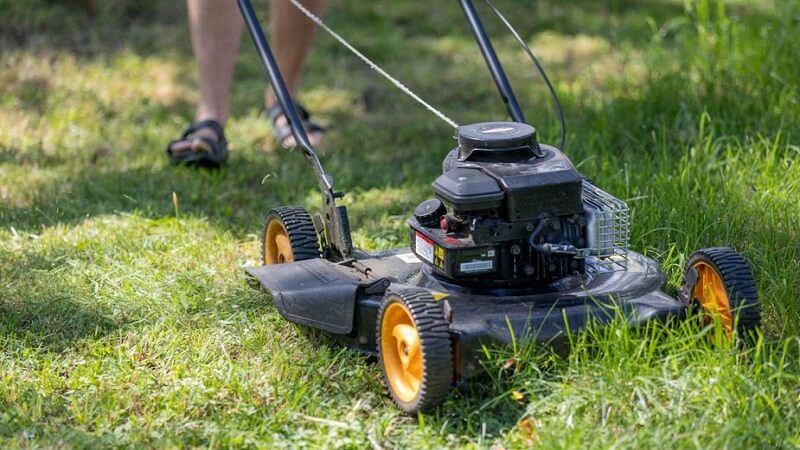Lawn mowers are essential tools for maintaining a tidy and healthy yard, and at the heart of their operation lies the lawn mower belt. This crucial component, often referred to as one of the most important belts for lawn mowers, transfers power from the engine to the blades, enabling them to cut grass effectively. However, many lawn mower owners experience the frustrating issue of frequent belt breakage. Understanding the reasons behind this problem can save time, money, and stress. In this article, we will explore the top reasons your lawn mower belt keeps breaking and provide practical solutions to keep your mower running smoothly.
Understanding Lawn Mower Belts
Definition and Function
A lawn mower belt is a flexible loop made of durable material that connects various components of the mower, primarily the engine and the cutting blades. Its primary function is to transfer rotational power, allowing the blades to spin at high speeds to efficiently cut grass. For those looking for high-quality options, you can explore a selection of belts for lawn mowers.
Types of Lawn Mower Belts
There are several types of belts used in lawn mowers, including:
– Deck Belts: These drive the blades and are critical for cutting performance.
– Drive Belts: These connect the engine to the wheels, enabling movement.
– Transmission Belts: These help in gear shifting for variable speed control.
Each type serves a specific purpose and must be maintained properly to ensure optimal performance.
Top Reasons for Lawn Mower Belt Breakage
Incorrect Belt Size or Type
Choosing the wrong belt size or type can lead to premature wear and tear. If a belt is too tight, it can cause excessive friction, while a loose belt may slip off during operation. Always refer to the manufacturer’s specifications when selecting replacement belts.
Misalignment of Pulleys
Proper pulley alignment is crucial for smooth belt operation. Misaligned pulleys can create uneven tension on the belt, leading to increased wear and potential breakage. Regularly check that all pulleys are aligned correctly and adjust as necessary.
Worn Out Pulleys
Over time, pulleys can wear down due to friction and debris accumulation. Worn pulleys may not grip the belt effectively, causing slippage and eventual breakage. Inspect pulleys regularly for signs of wear, such as rough edges or visible damage.
Overstretched Belt
Belt stretching can occur due to excessive load or improper installation. A stretched belt loses its effectiveness in transferring power and is more prone to snapping. To prevent overstretching, avoid mowing in overly tall grass or at high speeds.
Improper Belt Installation
Incorrect installation is a common mistake that can lead to premature belt failure. Ensure that belts are routed according to manufacturer guidelines and that they are seated properly on all pulleys. Pay attention to tension adjustments as well.
Debris and Foreign Objects
Grass clippings, sticks, and other debris can accumulate on the mower deck and around pulleys. This buildup increases friction on the belt and can lead to damage. Regularly clean your mower deck after use to prevent debris-related issues.
Extreme Weather Conditions
Extreme temperatures can affect belt materials. High heat may cause belts to harden or crack, while cold weather can make them brittle. Store your lawn mower in a climate-controlled environment when possible, and consider using weather-resistant belts.
Poor Quality of Belt
Using low-quality replacement belts can result in frequent breakage. Invest in high-quality belts from reputable manufacturers that meet OEM specifications for durability.
Lack of Regular Maintenance
Regular maintenance is key to preventing issues with lawn mower belts. Neglecting routine checks can lead to unnoticed wear on components like pulleys and bearings, ultimately resulting in belt failure. Establish a regular maintenance schedule to inspect all moving parts.
Prevention and Maintenance Tips
To extend the life of your lawn mower belt and prevent breakage:
- Choose the Right Belt: Always use OEM parts that match your mower’s specifications.
- Inspect Pulleys Regularly: Look for signs of wear or misalignment and replace worn parts promptly.
- Clean After Use: Remove grass clippings and debris from the deck after each mowing session.
- Lubricate Moving Parts: Regularly grease spindles and idlers to ensure smooth operation.
- Check Tension: Ensure that belts are neither too tight nor too loose; adjust tension as needed.
- Store Properly: Keep your mower in a dry, temperature-controlled environment when not in use.
- Follow Manufacturer Guidelines: Adhere strictly to maintenance schedules recommended by your mower’s manufacturer.
Conclusion
Understanding why your lawn mower belt keeps breaking is crucial for effective lawn care. By recognizing common issues such as incorrect sizing, misalignment, debris accumulation, weather effects, low-quality parts, and lack of maintenance, you can take proactive steps to prevent future breakages. Implementing regular maintenance routines will not only enhance your mower’s performance but also extend its lifespan.
By following these tips and being attentive to your lawn mower’s needs, you’ll enjoy a well-maintained yard without the hassle of frequent repairs.
Frequently Asked Questions
What is the average lifespan of a lawn mower belt?
Insights into factors affecting belt durability.
Can I replace a lawn mower belt myself?
DIY tips and considerations for belt replacement.
How do I know if my lawn mower belt is the correct type and size?
Guidance on selecting the right belt.
What are the signs of a failing lawn mower belt?
Identifying early warning indicators of belt wear or damage.
